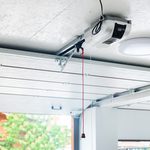Vapor and Air Barriers
I could never quite figure out where a vapor barrier should go, and now my renovator is talking to me about an air barrier. What's the difference between the two?
Air barriers and vapor barriers are elements of the house shell designed to help us to control moisture from causing damage in our houses. Sometimes they can be the same thing, like a sealed polyethylene sheet, sometimes they are installed separately. A vapor barrier (often called a vapor retarder because it doesn't keep all the moisture out) is a sheet of material (usually polyethylene plastic) installed on the "warm in winter" side of the insulation that prevents household moisture from filtering right through wallboard and on to the cold side of the insulation, where it could condense and cause mold and rot. However, since large quantities of water can infiltrate walls through air drafts, protecting your house from moisture also demands that you not let air wander in and out of your walls and attics. This is where air barriers come in. They can be a whole system of sealing your house on the inside, such as making electrical boxes, window frames, and floor joints airtight. Air barriers can also be sheathing or housewrap paper on the outside of the house. If the air barrier is on the cold side of the envelope, it must not be a vapor barrier at the same time; that is, it must stop air but let water vapor filter through it to allow a wet wall to dry out. All of this is complicated, but necessary, in our cold climate.



